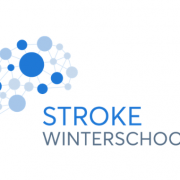Neurotechnology Improves Upper Limb Motor Rehabilitation in Severe Chronic Stroke
By Peter Vanacker, Antwerp University Hospital, Belgium
Upper limb motor deficits in severe stroke survivors often remain unresolved. In contrast with mildly and moderately impaired stroke victims, survivors with severe deficits show often unpredictable and negligible treatment effects with classical rehabilitative treatments. Novel neurotechnologies seems promising to support upper limb motor restoration. They often offer the opportunity to deliver a more high-intensity motor training.1
Recently, Coscia and colleagues reviewed the mechanisms of action and effectiveness of rehabilitation including robotics, muscular electrical stimulation, brain stimulation and brain/compute machine interfaces (BCI/BMI),1 which are all very promising new neurotechnologies in stroke rehabilitation.
Studies included in the review were focusing on chronic stroke patients with a severe upper limb deficit (defined by average upper extremities Fugl-Meyer score of <30 prior to treatment). Treatment effectiveness was based on the effect size on the Fugl-Meyer scores.
Rehabilitation robots (e.g. exoskelet) are interactive motorized devices allowing fine-graded limbs mobilization and measurement. Diverse trials suggested that robotics alone, mostly for task-oriented training, provide safe and small, marginally clinically meaningful improvement.
Muscular electrical stimulation, especially brain-controlled functional stimulation, strengthens the brains’ connections to the paretic muscles. It is applied mainly for shoulder subluxation, hand opening and wrist dorsiflexion. Only the first indication has been established to be significantly effective in clinical trials.
Non-invasive brain stimulation is used to modulate the cortical excitability of the stimulated area. Repetitive Transcranial magnetic stimulation (rTMS) and transcranial direct-current stimulation (tDCs) are the most adopted techniques to enhance brain plasticity, even in combination to achieve synergistic effects. Use of invasive implants has the potential to deliver brain stimulation with high temporal/spatial resolution and in a more continuous way of stimulation (even during home-based rehabilitation).
BCI/BMI activate or deactivate assistive or rehabilitative devices directly by brain activity of the user. They restore the lost motor functions acting on central and peripheral mechanisms: reorganizing central command, leading to cortical plasticity and facilitate neurofeedback. Current evidence in this relatively new field is insufficient. Adopting new strategies with functional imaging (e.g. real-time fMRI, near-infrared spectroscopy) and invasive brain body computer/machine interfaces are next steps in rehabilitation.
In the future, personalized interventions will combine different interventions strategies in sequence. A necessary conceptual change from ‘one-suits-all’ treatment towards individually tailored, longitudinal rehabilitation, by adopting novel technologies will perhaps shed more light in the area.
Reference
- M Coscia, MJ Wessel, U Chaudary, et al. Neurotechnology-aided interventions for upper limb motor rehabilitation in severe chronic stroke. Brain 2019;142: Pages 2182–2197





